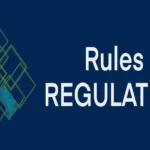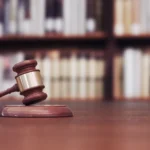As we near the end of 2025, the future of copyright protection is being reshaped by rapid technological advances and evolving legal frameworks. Forces like Artificial Intelligence and blockchain technology, alongside major global policy reforms, are driving a critical transformation in how creators and businesses protect intellectual property.
This article explores these key movements, diving into the specifics of copyright and AI regulation, the emerging role of blockchain in IP rights and licensing, and the most significant copyright law updates of 2025. We’ll examine new strategies in digital rights management and how tech is enabling more effective IP enforcement in this new digital age.
AI-Generated Works & Human Authorship
In 2025, a major takeaway is that human authorship remains essential for copyright eligibility. The U.S. Copyright Office reaffirmed this in Part 2 of its “Copyright and Artificial Intelligence” report (released January 29, 2025): “material generated wholly by AI is not copyrightable,” and only works with sufficient human contribution may qualify.1
A February 2025 summary reinforces that existing copyright laws are “adequate and appropriate” for handling works containing AI-generated components.
Key practical insight: To ensure copyright protection, creators should add creative edits, arrangements, or selections to AI-generated output—thus embedding substantial human authorship.2
Fair Use and AI Training: Legal Dynamics
The fair use doctrine is under intense scrutiny in AI contexts:
- In May 2025, the U.S. Copyright Office released a landmark report warning that using copyrighted content to train AI models may constitute infringement—especially if the model reproduces similar outputs or uses unlicensed datasets.3
- Key fair-use factors now include market impact and transformation. The Office highlighted that large-scale use of copyrighted works, especially for commercial gain, likely exceeds fair-use boundaries.
- Knowing the training data is pirated or illegal significantly damages a fair-use defense, but isn’t automatically fatal to it. Many current lawsuits allege that model developers were aware they were using illegally obtained works.
- Government intervention isn’t needed now. The existing fair-use doctrine can handle most cases, and a voluntary licensing market should continue to mature for those it can’t.
- Adding guardrails—like blocking specific prompts or filtering outputs—can strengthen a fair-use defense.
2025 High-Stakes Lawsuits and Settlements
2025 has seen pivotal legal actions shaping the future of copyright protection.
In the lawsuit against Anthropic, authors accused the company of training its AI, Claude, using millions of pirated books without permission or payment. Anthropic settled the high-stakes lawsuit where the judge had ruled that storing books used for AI training partly violated copyright. While fair use was acknowledged in part, Anthropic opted for settlement due to massive liability risks.4 The fate of the pending generative AI lawsuits could hinge on fair use, a still-evolving concept that no court had addressed in the cases until June.
DMCA’s CMI Provisions: The Emerging Legal Split in AI Litigation
The application of the Digital Millennium Copyright Act (DMCA) to AI training models is currently a source of significant legal contention, particularly concerning Copyright Management Information (CMI).
Key Point: The DMCA’s CMI provisions prohibit the intentional removal or alteration of identifying data (like author names, copyright notices, and usage terms) when done to enable or conceal infringement. The critical legal question is whether the internal stripping of CMI during AI data processing constitutes a sufficient legal injury to support a lawsuit.
Courts are clarifying how the DMCA’s CMI provisions apply to AI. Cases like Raw Story v. OpenAI (dismissed for lack of harm) contrast with Intercept Media v. OpenAI and The New York Times v. Microsoft, where the removal of copyright management information (CMI) was deemed a tangible harm.5
Separately, AI giants—Meta, Google, OpenAI, Microsoft, Anthropic—have scored major fair-use wins, reinforcing litigation defenses for training on publicly available content. Critics argue this undermines content creators’ value and incentives.
Legislative Moves & Global Policy Trends
On the legislative and regulatory front:
- In the U.S., the AI Accountability and Personal Data Protection Act was introduced by Senators Hawley and Blumenthal in July 2025. This bipartisan bill would prohibit unauthorized use of copyrighted content for AI training and make it easier for creators to sue violators.6 It would require companies to disclose all third parties that receive the data if consent is granted, backed by financial penalties and court orders.
- The Generative AI Copyright Disclosure Act, introduced in April 2024, seeks to require AI developers to notify the Register of Copyrights about copyrighted material used in training data—thus improving transparency.7
- In the U.K., a Data Bill amendment proposed by Lady Kidron would allow—but not mandate—the government to require AI firms to disclose their use of copyrighted content. This aims to foster licensing transparency.8
- EU developments are moving toward removing the notion that “silence equals consent.” A new study recommends replacing the current opt-out system with opt-in licensing, mandatory remuneration, watermarking, and traceability safeguards for training content.9
- On August 1, 2024, the European AI Act came into force. It requires AI providers to disclose training data details, comply with text/data mining exceptions, and label AI-generated outputs.
Blockchain, Smart Contracts & Tech-Driven Enforcement
Blockchain and watermarking are gaining traction in the field of copyright protection.
A system dubbed DataSafe combines physical unclonable functions (PUFs) with blockchain tracking to securely watermark digital media—ensuring traceability and ownership verification. On the large-language-model front, recent research surveys explore methods like model fingerprinting and watermarking to safeguard model IP and trace authorship—even as outputs circulate widely. Broader technical perspectives also discuss protecting both data owners (source content) and model builders—with strategies including watermarking, model protection, and detecting model theft.
Advanced technologies, such as blockchain and watermarking, are thus being actively developed to create auditable and trackable protection for both original copyrighted data and the complex AI models trained on it.
Looking Ahead: Smart Contracts & Licensing
Smart contracts powered by blockchain may soon automate licensing, royalty distribution, and rights enforcement—particularly for AI-generated content.
What Creators and Businesses Must Know
- Human input is vital—ensure AI outputs include creative, human-led modifications.
- Implement guardrails in AI systems to strengthen fair-use arguments.
- Monitor global legal trends—across the U.S., EU, UK—that influence compliance.
- Explore blockchain and watermarking to assert IP rights and trace ownership.
- Engage with legislators and advocacy groups to shape fair policy outcomes.
Final Thoughts
The future of copyright protection in 2025 is being shaped by the intersection of AI, global policy reforms, blockchain technologies, and legal precedent. For creators and businesses, the key lies in combining human creativity with tech-savvy strategies—ensuring protections via substantial authorship, guardrails, transparency, and proactive legal alignment. By embracing these trends, the IP ecosystem can safeguard innovation and uphold creator rights in the digital age.10
FAQ
1. How has copyright law evolved in 2025 to address digital content and AI?
2025 sees reinforced emphasis on human authorship for copyright protection and stricter fair-use scrutiny of AI training.
2. Who owns the copyright to AI-generated works in 2025?
Generally, AI-generated works without creative human involvement aren’t protected. Copyright may belong to those providing meaningful human edits or selections.
3. Is blockchain being used for copyright protection now?
Emerging solutions like DataSafe use PUF watermarking and blockchain for traceable IP protection. Also, model watermarking/fingerprinting is advancing in LLM preservation.
4. How are social media platforms adapting to modern copyright laws?
Platforms face DMCA-based lawsuits—some defend CMI removal under insufficient harm, others face liability. Enforcement and transparency are in focus.
5. What are the key copyright trends businesses should watch in 2025?
- Legal clarity on AI-generated works
- Fair-use scope for AI training
- Legislative transparency and opt-in frameworks (U.S., EU, UK)
- Blockchain and smart-contract licensing
- Court trends post-Anthropic and AI fair-use rulings



